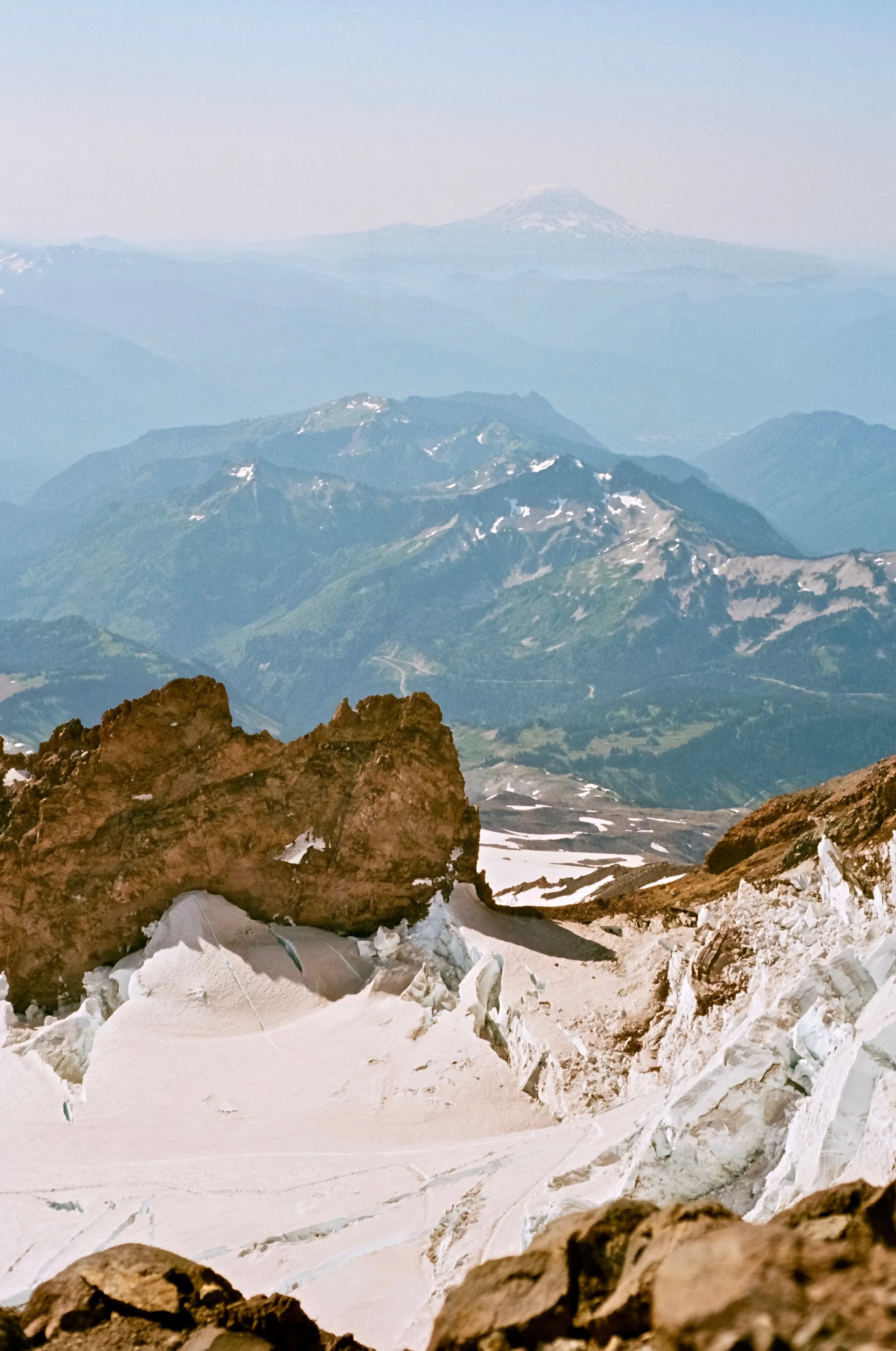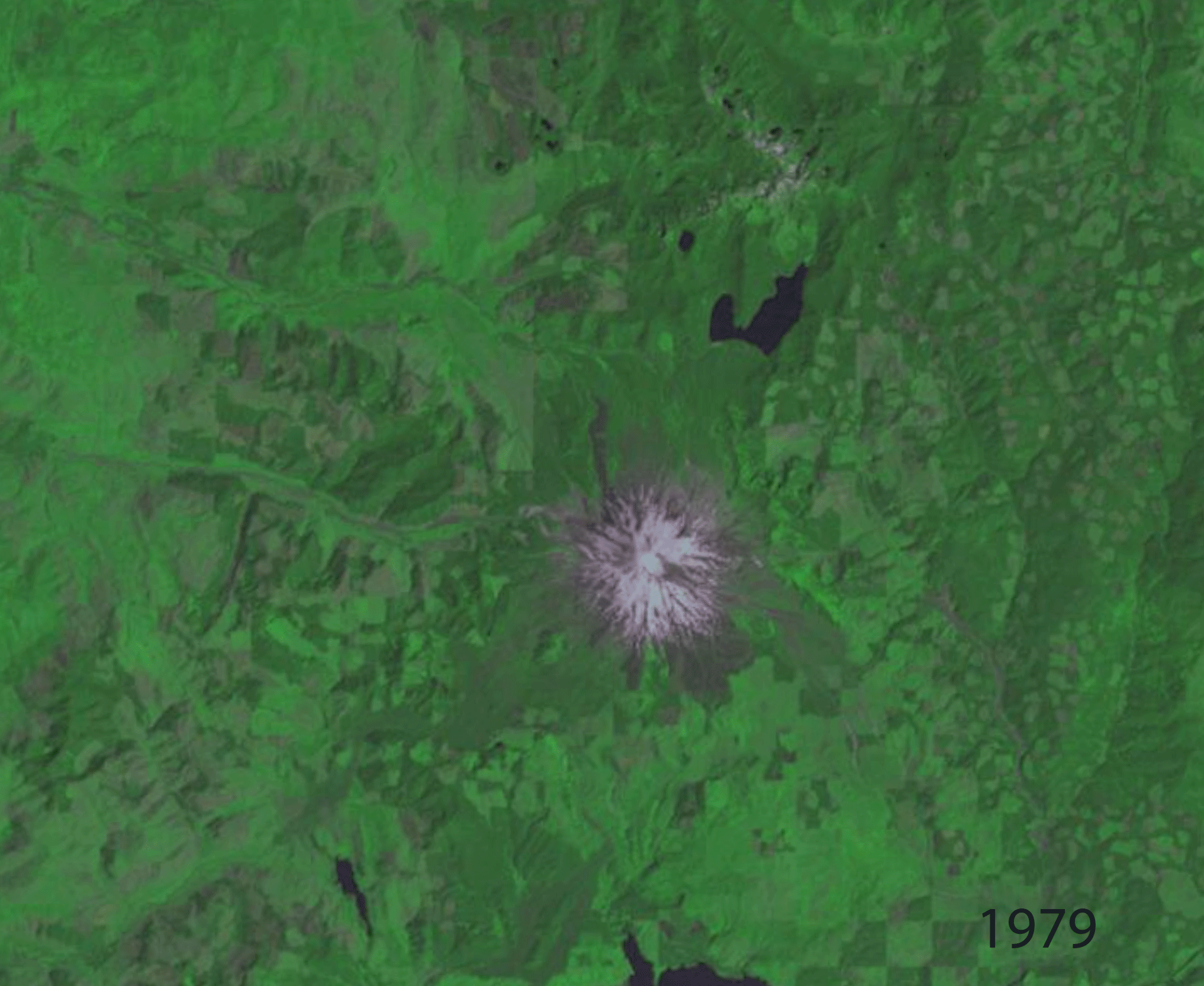Just a couple of days ago (May 18) was the 40th anniversary of Mount St. Helens’ notorious eruption, while today is the 105th anniversary of Mount Lassen’s explosive eruption, which got me thinking about the string of Cascade volcanoes that span nearly 700 miles from British Columbia to California. These precipitous ice-capped mountains stand distinct among their surroundings, demanding attention across the entire region. Plus, there’s also their occasionally calamitous and threatening nature that draws in thrill-seekers, excites volcanologists and (perhaps?) lingers uneasily in the backs of minds of the inhabitants of Portland, Seattle, Vancouver and beyond.
My past experiences in the Pacific Northwest have taught me one thing about these volcanoes: they serve as a group of modern deities to locals, and none other than Mt. Rainier sits as the crown of all the Cascades. You could almost walk down any street on a rare, sunny day in Seattle and hear people exclaim in joy that “the Mountain is out”. For three months a year (when park entrances aren’t buried under 50 feet of snow) there is an annual migration to the foot of the mountain at places such as the bluntly yet appropriately named Paradise. John Muir, with his usual verbose language, certainly was onboard with this mountain admiration, exclaiming that “of all the fire mountains which like beacons, once blazed along the Pacific Coast, Mount Rainier is the noblest…” (Our National Parks).
Mount St. Helens on April 23, 2020. Landsat 8. Notice the immense amount of brown driftwood debris still floating on Spirit Lake (top right of image) as a result of the eruption.
Muir never saw a Cascade volcano erupt, but native stories, geological strata and modern-day eruptions tell us that these volcanoes are very much alive. Geologically, this chain exists because of the Cascadia Subduction Zone, where the Juan de Fuca plate takes a dive under the North American plate just off the PNW coastline, providing the recycled material and mechanism for these volcanoes. Visit the US Geological Survey’s website and you’ll see that a number of these peaks are classified as “Very High” threat, including Mount Shasta, Glacier Peak and Crater Lake among others. Atop both Mount Rainier and Mount Baker, I can remember a strong smell of sulfur at the summit—an odorous reminder that somewhere below me magma is still churning and driving these surface processes. It’s a whole lot of uphill slog and trudging around crevasses to top these mountains, and herein lies one of the primary dangers: any eruption is bound to melt the immense amounts of glacial ice that top these summits, with cities such as Tacoma lying directly downstream.
Mount St. Helens was known for its incredible beauty pre-1980 eruption, making it a top target for climbers. View from Spirit Lake. Credit: USGS.
Before and after of Mount St. Helens’ eruption. Notice the return of vegetation in the 2019 false color image.
Drive to Crater Lake for clues of what the future may hold for some of these Cascade volcanoes. Like Mount St. Helens, the former volcano called Mount Mazama had a series of explosive eruptions (~7700 years ago) that led to the collapse of its upper slopes and the formation of its pristine lake, while releasing 50 times as much lava as Mount St. Helens and over 10 cubic miles of ejecta. Don’t worry—these lake walls are unlikely to be breached any time soon despite future potential for another eruption; landslides or moderate volcanic activity are unlikely to topple the 500-foot shoreline walls. Although Mount St. Helens has been in the spotlight since the 80’s and again in 2004, any of these other mountains could go off next in an explosive manner. Previously, Mount Lassen was the last volcano to erupt in the contiguous United States in 1914-15, with Mount Rainier having its own eruption some time in the mid 1800’s; it seems Cascade eruptions occur about twice per century.
Crater Lake and Wizard Island on February 25, 2020. Landsat 8.
During this current lull, ski resorts have popped up on the slopes of Baker, Hood and Shasta, while established climbing routes bring streams of mountaineers up these mountainsides annually. Meanwhile, a string of new roads, bridges and visitor centers draw people closer to these volcanoes every year. For now, it seems like it’s all veneration and recreation, with just a bit of preparation. It’s upon these colossal giants where feeble human experiences are put in context with vast geological timescales, where change can occur overnight, or at glacial pace. There’s a lot of weight in the word stratovolcano, and there’s a lot to learn by admiring their beauty and studying their astounding menace.
Crater Lake, August 2019.
Mount Shasta on August 1, 2019, with Mount Shasta Ski Park bottom center. Sentinel-2.
Looking out over the Emmons Glacier and Little Tahoma Peak while descending from the summit of Rainier, August 2019.
Satellite data adapted from ESA’s Copernicus program and NASA/USGS’s Landsat 8. CC BY-SA 3.0 IGO.




